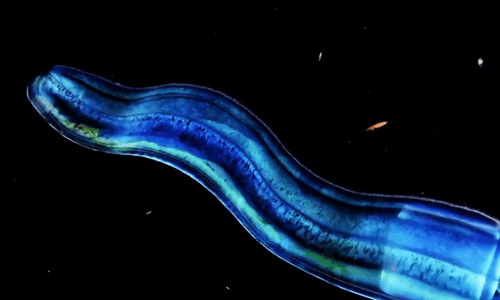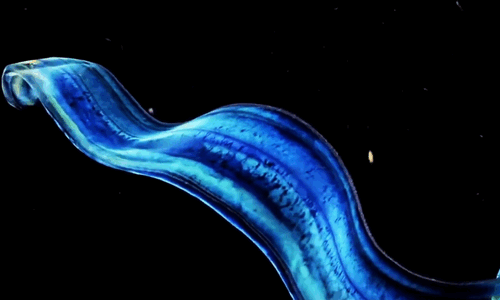Latest Posts by nasa-hubble - Page 2



the venus girdle jellyfish is also incredible
source |x|










Agnes Giberne - The Story of the Sun, Moon, and Stars.

This centuries old japanese nature illustration includes sea slaters and even land planarians!
Ocean waves

A four-leaf clover of moon jelly guts and gonads to ward off those Friday the 13th vibes
Roman’s Five-Year Forecast: A Downpour of Data!
Our Nancy Grace Roman Space Telescope recently passed a major review of the ground system, which will make data from the spacecraft available to scientists and the public.
Since the telescope has a gigantic field of view, it will be able to send us tons of data really quickly — about 500 times faster than our Hubble Space Telescope! That means Roman will send back a flood of new information about the cosmos.

Let’s put it into perspective — if we printed out all of Roman’s data as text, the paper would have to hurtle out of the printer at 40,000 miles per hour (64,000 kilometers per hour) to keep up! At that rate, the stack of papers would tower 330 miles (530 kilometers) high after a single day. By the end of Roman’s five-year primary mission, the stack would extend even farther than the Moon! With all this data, Roman will bring all kinds of cosmic treasures to light, from dark matter and dark energy to distant planets and more!
Learn more about the Roman Space Telescope.
Make sure to follow us on Tumblr for your regular dose of space!








THE OCEAN; WHERE EVERYONE CAME FROM
slothrust – horseshoe crab, @randomingoftherandomness , kirsten sims, hrvoje majer, jfk, dunkirk (2017) dir. christopher nolan, haevn – the sea

Lea Ignatius(Finnish,1913-1990)
Syysmuutto(Autumn migration) 1982 26.5 x 28.5cm via



Pierrot le fou (1965) // dir. Jean-Luc Godard


i sent myself to the seaside for my health (:
I saw a celebrity yesterday night at the beach 😍🤩🎉

NASA Sees Our Ocean in Color. How About You?
Take a deep breath. Feel the oxygen in your lungs. We have the ocean to thank for that! Over long time scales, between 50 and 70 percent of our planet's oxygen is produced by microscopic organisms living in the ocean.

Today is World Oceans Day! And as our planet’s climate continues to change, we want to understand how one of our biggest ecosystems is changing with it. Wondering how you can celebrate with NASA? We’ve got downloadable coloring pages and online coloring interactives to show how we study the ocean. Read on.
From Space to Sea

Download ocean missions coloring page here Download Sentinel-6 Michael Freilich coloring page here
We use planes, boats, Earth-observing satellites and much more to study the ocean and partner with organizations all over the world. Here are a few examples:
From Sea
The Export Processes in the Ocean from Remote Sensing (EXPORTS) is oen way we study the ocean from the sea. study changes in the ocean’s carbon cycle. In May, scientists and crew conducted research on three ships in the Northern Atlantic Ocean. They hope to create models to better understand climate change patterns.
From Space
Launched last year, the Sentinel-6 Michael Freilich spacecraft began a five-and-a-half-year prime mission to collect the most accurate data yet on global sea level and how our oceans are rising in response to climate change. Sentinel-6 Michael Freilich is just one of many satellites monitoring the ocean from space. Together with other Earth-observing spacecraft, the mission will also collect precise data of atmospheric temperature and humidity to help improve weather forecasts and climate models.
Finding Eddies

Download Eddies Coloring Page The ocean is full of eddies – swirling water masses that look like hurricanes in the atmosphere. Eddies are often hot spots for biological activity that plays an important role in absorbing carbon. . We find eddies by looking for small changes in the height of the ocean surface, using multiple satellites continuously orbiting Earth. We also look at eddies up close, using ships and planes to study their role in the carbon cycle.
Monitoring Aerosols and Clouds

Clouds coloring interactive here
Aerosols coloring interactive here
Tiny particles in the air called aerosols interact with clouds. These interactions are some of the most poorly understood components of Earth's climate system. Clouds and aerosols can absorb, scatter or reflect incoming radiation -- heat and light from the Sun -- depending on their type, abundance and locations in the atmosphere. We’re building new instruments to better understand aerosols and contribute to air quality forecasts.
The Ocean in Living Color Download PACE coloring page here

The Plankton, Aerosol, Cloud, ocean Ecosystem (PACE) mission will continue and greatly advance observations of global ocean color, biogeochemistry, and ecology, as well as Earth’s carbon cycle and atmospheric aerosols and clouds. It’s set to launch in late 2023 to early 2024. Want to learn more? Click here to see how PACE will collect data and here to see what PACE will see through our coloring interactives. (Make sure to check out the hidden surprises in both!)
Exploring Ocean Worlds on Earth and Beyond
Download Clouds coloring page here

Using our understanding of oceans on Earth, we also study oceans on other planets. Mars, for example, contains water frozen in the ice caps or trapped beneath the soil. But there’s even more water out there. Planets and moons in our solar system and beyond have giant oceans on their surface. Saturn’s moon Enceladus is thought to have a massive ocean under its frozen surface, which sometimes sprays into space through massive fissures in the ice.
Learn more about ocean worlds here: nasa.gov/oceanworlds
Interested in learning more about how NASA studies oceans? Follow @NASAClimate, @NASAOcean and @NASAEarth.
You can also find all the coloring pages and interactives here.
Make sure to follow us on Tumblr for your regular dose of space: http://nasa.tumblr.com.
every time i look at clementine im like Wow i cant believe you are in my house and we are friends and you are a soft little baby. fucking insane


uncle yanco (1967) dir. agnès varda
aren’t you tired of being tired don’t you just wanna be not tired?









A visual explanation of why stars fall on Earth. Details of The Augsburg Book of Miracles, an illuminated manuscript made in Augsburg in Germany in the 16th century, anonymous author-ess.



Those gifs are wholly mackerel!
Pacific mackerel (Scomber japonicus) are dazzling denizens of the California coast. Migrating to colder waters off of Washington in the summer and down to warmer Baja California in the winter, plentiful parties of these planktivorous pisces are commonly spotted south of Point Conception, where they make a meal of drifting morsels while dodging hungry hordes of seabirds, seals and tuna.
(This latter predator must add some insult to injury in the fray, as Pacific mackerel are scombrids and close cousins to their larger, faster tunid terrors.)

Pacific mackerel were once a staple in the Cannery Row days, and today are a responsibly managed, sustainable fishery along the West Coast.

A final fun fact: Schooling fishes of different species tend to group together based on size—every now and again there will be a standout jack mackerel Trachurus symmetricus in our exhibit lacking the distinctive green-gray-blue backs of the Pacific mackerel. We don’t give names to the fishes but if you find a sly horse mackerel feel free to call it ‘Waldo’!

Milan Kundera, The Unbearable Lightness of Being (trans. Michael Henry Heim)
[Text ID: “Well? “Nothing yet. I’ve been waiting.” “For what?” She made no response. She could not tell him that she had been waiting for him.”]



Un beau soleil intérieur (Claire Denis, 2017)


mRNA and the diamonds



